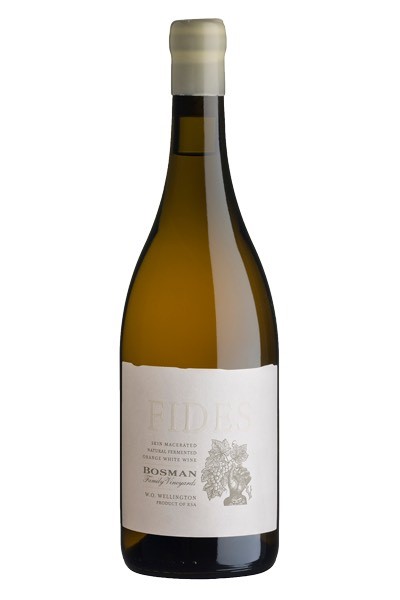South African Wineries Have Embraced Wild Yeast
South African wineries have taught us that you should not waste a good crisis, nor a good strain of yeast.
There is a quote, attributed to Sir Winston Churchill that reads: you should never waste a good crisis.
Alongside his wisdom, Sir Winston Churchill was well known for his fondness for Champagne. Pol Roger Champagne estimates that Sir Churchill drank over 42,000 bottles of Champagne over his lifetime.
Like Sir Winston Churchill, the world we live and work in is teeming with culture and symbolism.
During rousing, wartime crises, Sir Winston imparted: “remember, gentlemen, it is not France we are fighting for, it is Champagne.”
Sourdough bread has become to a crisis-driven, Covid-2019 riddled world, what Champagne symbolized to the allied forces in wartime.
San Francisco sourdough bread recipes have traveled the world, faster than bacteria in 2020. A sourdough starter is what causes sourdough to rise, instead of using active dry yeast, sourdough bread uses a starter to rise. The sourdough starter gives bread its sour flavour and is also used as leavening. For over 5000 years, bakers have combined flour, water and patience to create leavening to make bread. After mixing flour and water, a bread-maker would wait for the mixture to ferment, and once it was sour and packed with gas, the baker would use it was a leavening, which caused the dough to rise. It takes roughly five days for yeast and bacteria to flourish in a mixture of flour and water. Patience, and pumping carbon dioxide into dough will reward a sourdough enthusiast with over 50 million yeasts and 5 billion lactobacilli bacteria in each teaspoon of sourdough. While modern, baker’s yeast creates a monoculture of Saccharomyces cerevisiae, in Discover Magazine reported in 2003 that sourdough bread is a product of wild yeasts and bacteria.
Cape Wine Master, Dave March described yeast as the silent winemaker. In a March 2020 article, published on wine.co.za, Dave writes: “Saccharomyces (cerevisiae) and other yeast genera occur naturally on grapes, probably dozens of strains on the same grape, (and on every other surface nearby) and some wineries rely on this natural population to ferment their wines.”
While Saccharomyces cerevisiae sounds like a complicated Harry Potter spell, it is an unsung hero for the pleasurable production and enjoyment of bread and wine.
The team at Bosman Wines have received global acclaim for their innovative wild ferment wines.
Winemaker, Corlea Fourie, assistant winemaker, Natasha Williams and Bosman Family Vineyards have earned international respect for their wines and winemaking practices. David Graver described Bosman Family Vineyards Fides as ‘thoughtfully done’ in a story for CoolHunting.com.
Fides, a Latin word which translates to ‘to trust’ is a bold example of wild ferment wine. David Graver writes, “the winemaker wanted the wine to speak for itself.”
According to Bosman Family Vineyards winemaker, Corlea Fourie, Bosman Family Vineyards Fides is a natural or wild ferment. Bosman Family Vineyards Fides is a skin-contact Grenache Blanc, termed ‘orange wine’.
Corlea says, “we go into the vineyard a day or two before the grapes come into the cellar – we then make up the ‘Pied du Cave’, which roughly translates to ‘foot of tank’. The Pied du Cave is the winemaking equivalent of a sourdough starter.”
Corlea expands, “a small number of grapes are picked a few days before all the grapes are going to be picked. This small number of grapes are crushed and allowed to start fermenting. This builds the population of the native yeasts that were present on the grapes. This culture is then added to the rest of the grapes when they are picked.”
Aside from good bread, Corlea says that the Fides would pair well with chicken liver pate.
Bosman Family Vineyards is an eighth-generation South African producer that embodies pairing and partnership. In 2007, 26% of the company is owned by the Adama Workers Trust, comprised of the farm’s highly respected workers.
Wild Ferment has long been embraced by South African winemakers. Ken Forrester says, “we’ve only used wild yeast ferments on our FMC for the last 20 years, from the initial vintage in 2000. Also, our Old Vine Reserve Chenin Blanc is fermented on wild yeast and always has been, since 1995.”
While wild fermentation has proved to be fortuitous for some, Dave March CWM cautions, “some yeasts might negatively affect fermentation, most notably stopping the ferment prematurely.”
While non-Saccharomyces cerevisiae might affect the outcome during winemaking and breadmaking, commercial yeasts are available to aid in flavour and fermentation.
Time and wine have proven that you should neither waste a good crisis, nor a good yeast.

Ten South African Wild Ferment Wines as Wild as The West
- Magna Carta Wines
Try: Carbonic Pinot Noir
- Stellenrust Wines
Try: BF Chenin, Mothership, BF Chardonnay
- Arendsig Single Vineyard Wines
Try: Inspirational Batch Chenin Blanc, Estate Range Chardonnay
- Glen Carlou
Try: Quartz Stone, Gravel Quarry and Collection Chenin Blanc
- Cederberg Private Cellar
Try: The Ghost Corner Wild Ferment Sauvignon Blanc
- Springfield Estate
Try: Wild Yeast Chardonnay
- Delheim
Try: Wild Ferment Chenin Blanc
- Waterkloof
Try: Circle of Life White
- Ken Forrester
Try: FMC Chenin Blanc
- Bosman Family Vineyards
Try: Fides Grenache Blanc
- by Tshepang Molisana